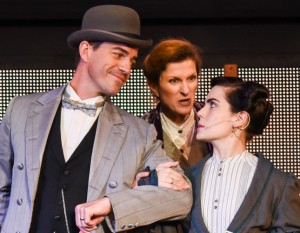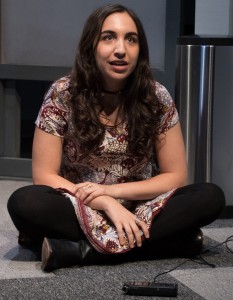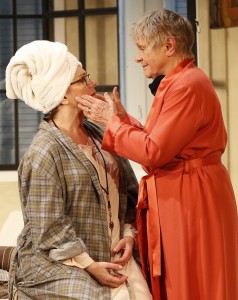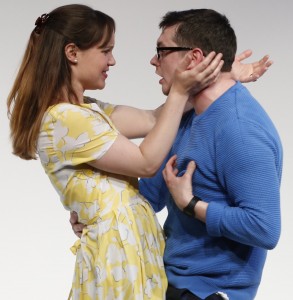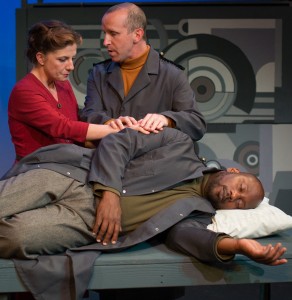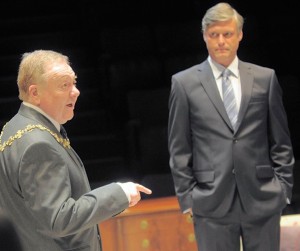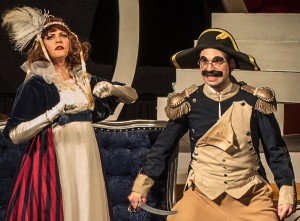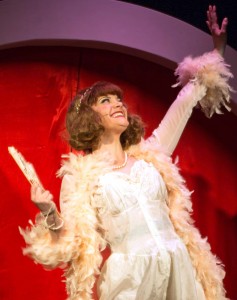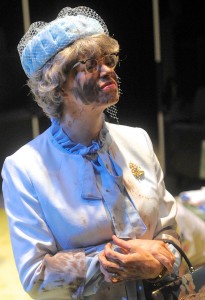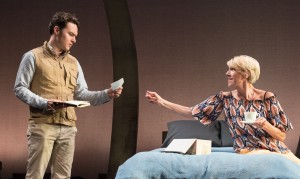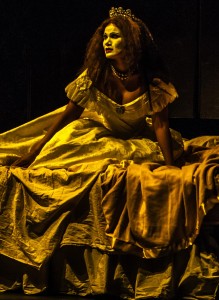First-time playwright Mat Schaffer is fortunate to have Brian Murray in the cast of his play Simon Says. Murray lends gravitas to the story of a “channeler”—emphatically not a medium, according to Murray’s character, Professor Williston—who connects to an entity named Simon. It’s been a while since the estimable Murray had a good part, and one wishes he were able to lift Schaffer’s serious-minded play beyond fiddle-faddle, but it just gets talkier and sillier in spite of the talented performers.
Williston, who has been the guardian of a young man named James since his childhood. James (Anthony J. Goes) has extraordinary paranormal powers as a channeler; but his mother exploited his renown until he had a meltdown during a tour, whereupon she abandoned him in Las Vegas. Williston then took guardianship. James has been lying low since that time, but the unscrupulous—or perhaps just blinkered—Williston wants to pursue James’s powers in the name of science and a book he has written. To do so, Williston has himself diverted funds for the overdue college education that James desperately wants in favor of their pursuing a money-making tour for the book. His plans change, however, upon the arrival of a young woman named Annie Roberts.
Annie has arrived for a channeling. She wants to contact her dead husband, Jake, who was killed in a car accident in the Berkshires that she survived. Strangely, the letter requesting this particular date was never opened by Williston, who nonetheless has expected her. Though James refuses to channel Simon for her, he ultimately relents.
Under Myriam Cyr’s direction, one’s disbelief may be suspended for awhile, and there’s certainly a frisson of creepiness when James, following the first channeling, says that he still hears Simon’s voice and a sudden, unexpected transformation occurs. Before you know it, poor James’s corporeal being has become Grand Central Terminal for spirits who are far from blithe, including Simon. Though Simon is known to Williston as a being who has existed through centuries and been “a priest at Luxor, a concubine in the Han dynasty,” the ancient shades go back to the Essenes, an early Christian sect to which Simon belonged that is best-known for the Dead Sea Scrolls. In addition to the sought-after Jake, the Essene intruders pop up in Williston’s cramped and book-strewn study (nicely realized by scenic designer Janie Howland).
From then on, the story of Judean love and betrayal is one that perhaps only Shirley MacLaine could buy whole hog. More notable than the direction is John R. Malinowski’s snappy lighting: it works overtime, changing with each new inhabitant’s arrival and departure, until you may find yourself admiring the light show more than the story.
Schaffer leaves it unclear whether a belief in the paranormal is the central issue or whether it’s reincarnation. Both are invoked as the bodies on stage become repositories for the insubstantial spirits, and though to some extent they can be related, the two prongs here overwhelm a story that needs more credibility.
Murray is blustery and gimlet-eyed as the sneaky Williston, and it’s pleasant to see him indulge in his formidable gift for comedy. Sitting under a teardrop glass lamp, he describes to Vanessa Britting’s Annie the division of labor: “He and I work as a team,” says Williston. Lightly flicking his fingers at a potted fern, he adds, “I create the ambiance.”
Goes is an effective and sympathetic James—working-class, sweaty and desperate to find his freedom from his past. One senses his yearning for independence, and Goes throws himself into the physical aspects, falling kerplop in and out of trances. Britting is a lovely and sympathetic Annie, although her hysteria at recounting her husband’s death is a bit over the top. As the catalyst for the evening’s revelations, however, she serves admirably.
The play is diverting, though one’s pleasure may depend more on individual thresholds of disbelief. For people with scant interest in credibility and a high tolerance for mumbo-jumbo, its romance-novel message of love surviving across millennia may be just the ticket.
Simon Says plays at the Lynn Redgrave Theater (45 Bleecker St., between Bowery and Lafayette) through July 30. Performances are at 7:30 p.m. Wednesday through Saturday. For tickets, call OvationTix at (866) 811-4111 or visit simonsaystheplay.weebly.com.









